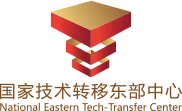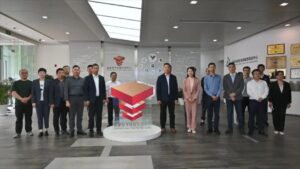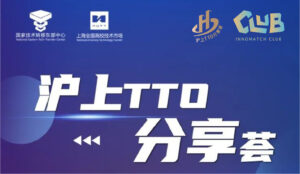
Stanford University has a famous saying: "Never let a professor sit at the negotiating table". Because once the technology is created, its value assessment, technology transfer, patent licensing and a series of other tasks are highly specialized and require high level professionals to complete.
At today's Pujiang Innovation Forum - Industry Forum, experts from various countries engaged in the science and technology services industry pointed out from different perspectives that the conversion of technological achievements is not enough to rely on the enthusiasm of technology inventors alone, it is now more necessary to provide systematic and high level science and technology services to help the technology to market smoothly. China urgently needs to fill this gap by developing professional IP service intermediaries.
Never let a professor sit at the negotiating table.
The Scripps Research Institute was ranked number one in this year's Nature magazine's ranking of the world's research institutions for innovation. It developed an immunotherapy drug that sold for a whopping $14 billion. Its first director, Richard Lerner, said, "Our results are always more interesting." He attributes this first and foremost to the institute's strong basic research capabilities: "Starting from scratch, we often spend billions of dollars on research and development on a single project." Such an investment in originality is designed to ensure scientific leadership while also ensuring intellectual property exclusivity. As a result, behind the Institute, a strong IP team is responsible for specializing in the benefits.
In fact, many prestigious universities in the UK and the US have built such a team. At the same time, a number of companies have developed in the market that focus on doing technology transfer. Barry Bragall, an internationally renowned intellectual property strategist and founder and CEO of Perception Partners, says that when we talk about technology, we must talk about intellectual property, which people generally think of as patents, but it also includes technology secrets, valuable data, relevant knowledge and technical solutions, which can provide a basis for patents. "The icing on the cake" is that it enhances its value while making it more acceptable to customers. Even a research institution's previous patent enforcement successes and reputation, as well as local policies, can affect patent conversion.
Roger Jackson, co-founder of Dowell Deep Technology Transfer, also said that in his years of global technology transfer, understanding the innovation capabilities and resources of the licensee company, market participation, and even the local IP protection status and cultural differences has been a must for him, "Any slip-up in any of these processes can affect the final outcome of the deal. " It would obviously be too hard for the professor to do all of this.
Shortfalls cannot simply be replicated in Europe and the United States.
In terms of quantity, the total number of patents applied for by Chinese universities is higher than those applied for by Stanford, MIT, Oxford and other universities in the UK and the US, but our transformation efficiency is far lower than theirs. Ltd. listed a set of data: Chinese universities apply for one to two thousand patents per year, but the final successful transformation of less than 5%, while the ratio of European and American universities' patent authorization is as high as 25% to 40%.
"This is because British and American universities often have a professional and strong intellectual property management team." Zonggang said the intellectual property management team at the University of Oxford in the United Kingdom has 92 people, 45 of whom are PhDs, and more than 20 masters. The technology transfer departments at the US National Institutes of Health, Stanford University and MIT also have dozens of people. And the number of patents they are responsible for applying for per capita each year is only 2 to 5. In contrast, many universities in China have only two people dedicated to intellectual property.
Can we simply copy the IP service system of developed countries to China? According to Nils Newman, an expert from the US National Science Foundation, China should carefully investigate and analyze its own knowledge transfer process, and then design a system to address the actual problems. For example, about 701 TP1T of technology transfer in the United States comes from enterprises, mainly driven by profits, and there is no law or bill to regulate it at the national level. As a result, only eight states in the U.S. are carrying out IPR work relatively well, while most other states are still exploring. He believes that China will find its own solutions for technology transfer to stimulate greater innovation.
(Source: Wen Wei Po, Qimin Xu)




